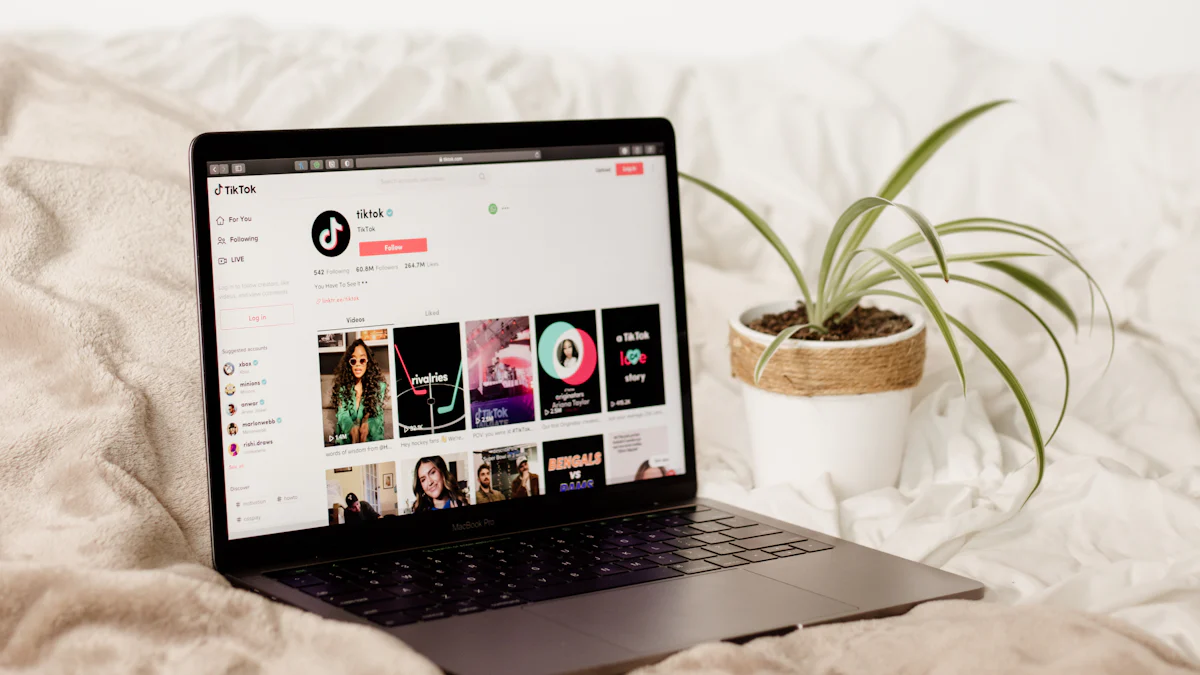7 Key KPIs to Track for Influencer Marketing Success

Tracking KPIs is essential for achieving success in influencer marketing. These metrics help you measure performance, identify areas for improvement, and maximize your return on investment. For example, 42.3% of marketers rely on conversions and sales to evaluate campaign success. KPIs like impressions, clicks, and sales provide clarity on what works and what doesn’t. They also align your kpi goals for influencer marketing campaigns with measurable outcomes. By monitoring these metrics, you can make data-driven decisions that amplify your brand’s visibility and drive tangible results.
Understanding Influencer Marketing KPIs
What Are KPIs?
Key performance indicators are measurable metrics that help you evaluate the success of your influencer marketing campaigns. These indicators provide a clear picture of how well your strategies are performing. In influencer marketing, common KPIs include likes, comments, and shares, which measure engagement. Other KPIs, such as impressions and reach, assess brand awareness. Conversion metrics, like sales or newsletter sign-ups, track the tangible outcomes of your campaigns. By focusing on these metrics, you can determine whether your efforts are meeting your goals.
Why KPIs Are Essential for Influencer Marketing
Tracking influencer marketing KPIs ensures that your campaigns stay on track. Unlike traditional digital marketing, which often prioritizes click-through rates or impressions, influencer marketing emphasizes engagement, brand awareness, and conversions. For example, analyzing the reach of an influencer's content helps you understand how many people are exposed to your brand. Engagement metrics, such as likes and comments, reveal how well your audience connects with your message. Conversion metrics, like sales or app downloads, show the direct impact of your campaigns. These insights allow you to measure success and refine your strategies.
Benefits of Tracking KPIs
Monitoring KPIs offers several advantages for your influencer marketing campaigns. First, it provides valuable insights into your audience's behavior and preferences, enabling you to create content that resonates with them. Second, it holds influencers accountable by setting clear expectations for their performance. Third, it helps you identify what works and what doesn’t, so you can focus on effective strategies. Regular KPI tracking also supports strategic planning by allowing you to set realistic goals and adjust your approach for long-term success. Ultimately, KPIs help you optimize your campaigns and achieve better results.
7 Key Influencer Marketing KPIs to Track

Engagement Rate
Engagement rate is one of the most important influencer marketing KPIs. It measures how actively your audience interacts with the content. High engagement indicates that the influencer’s followers find the content relevant and appealing. You can calculate engagement rate using several methods: dividing total engagements by reach and multiplying by 100, or dividing total engagements by the number of followers and multiplying by 100. For example, if a post receives 300 interactions and the influencer has 10,000 followers, the engagement rate is 3%.
Industry benchmarks help you evaluate performance. An engagement rate between 0.73% and 2.5% is average, while rates above 4.4% are outstanding. On Instagram, a good engagement rate ranges from 1% to 5%, with anything above 6% considered excellent. Tracking this metric allows you to identify influencers who resonate with their audience and drive meaningful interactions.
Reach and Impressions
Reach and impressions are essential for measuring audience reach and brand visibility. Reach refers to the number of unique users who see the content, while impressions count the total views, including repeat views. These metrics reveal how well your campaign spreads awareness. For instance, nano-influencers with 1,000 to 9,999 followers typically achieve a 13.2% reach rate, while micro-influencers with 10,000 to 49,999 followers average 15.7%.
Understanding these numbers helps you assess the effectiveness of your influencer marketing campaigns. A high reach indicates that your content is reaching a broad audience, while impressions show how often it is being viewed. Both metrics are critical for evaluating the success of brand awareness efforts.
Click-Through Rate (CTR)
Click-through rate (CTR) measures how often users click on a link in the influencer’s content. This KPI is crucial for campaigns focused on driving traffic to your website or landing page. The average CTR for Instagram influencer marketing is 1.08%. A higher CTR suggests that the content successfully motivates the audience to take action.
To improve CTR, analyze performance data and adjust your strategy. For example, track engagement rates and conversions to understand what resonates with your audience. Use this information to refine future campaigns and enhance results. Monitoring CTR ensures that your influencer marketing efforts lead to measurable outcomes.
Conversion Rate
Conversion rate measures how effectively your influencer marketing campaigns turn viewers into customers. This key performance indicator evaluates the percentage of users who take a desired action, such as making a purchase or signing up for a newsletter. A higher conversion rate indicates that your campaign resonates with the audience and drives meaningful results.
Conversion rates vary across platforms and influencer types:
- Instagram micro-influencers (10K-100K followers): 1.1%
- Macro-influencers (100K-1M followers): 0.7%
- Mega-influencers (1M+ followers): 0.3%
- Bloggers (10K-100K followers): 2.3%
Several factors influence conversion rates:
- Audience relevance and alignment with the influencer.
- Quality and authenticity of the influencer’s content.
- Effectiveness of the call-to-action (CTA).
By focusing on these elements, you can improve your conversion rate and maximize the impact of your influencer marketing campaigns.
Cost Per Acquisition (CPA)
Cost per acquisition (CPA) measures the cost of acquiring a customer through your influencer marketing efforts. This metric helps you evaluate the efficiency of your campaigns. Lower CPA means you’re achieving results at a reduced cost, which improves your return on investment.
To reduce CPA:
- Work with multiple influencers to expand reach.
- Collaborate with smaller influencers who often have higher engagement rates.
- Use AI tools to create compelling content.
- Set clear campaign goals and monitor KPIs.
Parfumado, for example, successfully reduced CPA by integrating influencer marketing into their media strategy. This approach not only lowered costs but also enhanced their return on ad spend.
Follower Growth
Follower growth tracks how your influencer marketing campaigns increase your brand’s social media following. This metric reflects sustained interest and engagement from the audience, which contributes to long-term brand success.
Growth rates differ by platform:
- TikTok: 4.96% weekly growth.
- Instagram: 2.55% monthly growth.
- Facebook: 0.39%-0.55% monthly growth.
Follower growth enhances brand loyalty and perception over time. By focusing on this metric, you can build a strong, engaged community that supports your brand’s identity and goals.
Brand Mentions and Sentiment
Brand mentions and sentiment are critical KPIs for understanding how your influencer marketing campaigns shape public perception. Brand mentions track how often people talk about your brand online, while sentiment analysis evaluates whether those mentions are positive, negative, or neutral. Together, these metrics reveal how your audience feels about your brand and its message.
Monitoring brand mentions helps you measure awareness and engagement. For example, tracking changes in mentions during a campaign shows how effectively your message resonates. Positive sentiment boosts brand loyalty and trust, while negative sentiment signals areas needing improvement. Addressing negative feedback quickly can prevent potential PR issues and protect your reputation.
Social listening tools simplify the process of tracking mentions and analyzing sentiment. These tools scan digital platforms for brand mentions and relevant keywords, providing insights into audience conversations. Some tools, like BrandMentions, offer instant alerts for mentions and help manage your brand’s reputation. Others identify enthusiastic promoters who could become brand advocates. Using these tools ensures you stay informed about how your campaigns impact consumer behavior.
Brand mentions and sentiment also help you evaluate long-term trends. By analyzing shifts in perception, you can refine your influencer marketing strategies to align with your audience’s preferences. Sustained positive sentiment often leads to follower growth and stronger engagement, which contribute to your brand’s success.
Incorporating these KPIs into your tracking process ensures you stay connected to your audience and adapt to their needs. This approach not only enhances your campaigns but also strengthens your brand’s image in the competitive world of influencer marketing.
Aligning KPI Goals for Influencer Marketing Campaigns
Setting Campaign Objectives
Setting clear campaign objectives is the foundation of successful influencer marketing. You need to define what you want to achieve before launching your campaign. Following these five steps ensures your goals are actionable and effective:
- Specific: Narrow down your goals. For example, instead of aiming to increase sales, specify whether you want to boost online purchases or in-store transactions.
- Measurable: Use quantifiable metrics to track progress. For instance, set a target of gaining 1,000 new followers.
- Achievable: Ensure your goals are realistic based on your resources and timeline.
- Relevant: Align your goals with your broader business objectives. If your focus is brand awareness, your campaign should prioritize visibility.
- Time limit: Set a deadline to keep your efforts on track and evaluate success within a specific timeframe.
By following these steps, you create a roadmap that guides your influencer marketing strategy and improves your marketing performance.
Choosing the Right KPIs for Each Objective
Selecting the right KPIs ensures you measure the success of your campaign objectives accurately. Your KPIs should directly reflect your goals. For example, if your objective is to increase brand awareness, focus on metrics like impressions, reach, and social mentions. For engagement, track likes, comments, and shares. When driving conversions, monitor sales and attributions.
Your KPIs must also remain relevant to your desired outcomes. If you aim to boost website traffic, referral traffic becomes a critical metric. Aligning KPIs with your objectives ensures your influencer marketing campaigns contribute meaningfully to your business growth.
Examples of Goal-KPI Alignment
Here are examples of how you can align your goals with specific KPIs:
- Brand Awareness: Use KPIs like reach, impressions, and brand mentions to measure visibility.
- Engagement: Track likes, comments, shares, and saves to evaluate audience interaction.
- Conversions: Focus on sales and conversion rates to assess the campaign’s impact on revenue.
- Traffic: Measure referral traffic to determine how effectively influencers drive visitors to your website.
This alignment ensures your kpi goals for influencer marketing campaigns remain focused and measurable. Clear objectives paired with relevant KPIs help you track progress and refine your strategy for better results.
Tools and Best Practices for Tracking Influencer Marketing KPIs

Tools for KPI Tracking
Tracking influencer marketing KPIs becomes easier when you use the right tools. These tools help you gather data, analyze performance, and make informed decisions. Here are some popular options:
- Google Analytics: Tracks website traffic, click-through rates, and conversions.
- Hootsuite: Monitors social media engagement and schedules posts.
- Sprout Social: Provides insights into audience behavior and post-performance.
- Grin: Manages influencer relationships and tracks campaign results.
- Upfluence: Identifies influencers and measures their impact.
- Neoreach: Offers advanced analytics for influencer marketing campaigns.
- Shopify Analytics: Tracks sales and customer behavior for e-commerce brands.
- ShareASale: Measures affiliate sales and performance.
These tools simplify the process of monitoring KPIs and ensure you stay on top of your campaign’s performance. For example, Google Analytics helps you understand user behavior, while Hootsuite and Sprout Social focus on social media metrics. By leveraging these tools, you can optimize your campaigns and achieve better results.
Best Practices for Monitoring and Analyzing KPIs
Effective KPI tracking requires a structured approach. Following best practices ensures you gain actionable insights and improve your influencer marketing strategy.
| Best Practice | Description | |-----------------------------------|------------------------------------------------------------------------------------------------------| | Setting Clear Goals and Benchmarks | Establish initial benchmarks to measure growth and align KPIs with marketing objectives. | | Regular Monitoring and Reporting | Monitor KPIs weekly or bi-weekly and compile reports for stakeholders to inform decision-making. | | Analyzing Data for Insights | Use data visualization tools to identify trends and refine strategies based on insights gained. |
Breaking down your goals and KPIs at the end of a campaign helps you understand what worked and what didn’t. For example, analyzing data from social media platform insights reveals trends in audience engagement. Affiliate tracking tools measure sales attributed to specific influencers, providing a clear picture of their impact.
Use these insights to refine your future campaigns. For instance, if a particular type of content drives higher engagement, focus on creating similar posts. Regularly monitoring KPIs ensures you adapt to changes and maximize profits from collaborations.
By combining the right tools with these best practices, you can track influencer marketing KPIs effectively and achieve long-term success.
Tracking the right KPIs is essential for influencer marketing success. It ensures your campaigns remain data-driven and aligned with broader business goals. Clear KPI goals act as a roadmap, helping you measure performance and refine strategies. Metrics like engagement, conversions, and brand sentiment provide actionable insights into audience behavior and campaign impact.
Use tools like Google Analytics and social media insights to monitor these KPIs effectively. Start setting measurable goals for your next campaign. By doing so, you can optimize results, build stronger connections with your audience, and achieve long-term success.
FAQ
What is the most important KPI for influencer marketing?
The most important KPI depends on your campaign goals. For brand awareness, focus on reach and impressions. If you want engagement, track likes, comments, and shares. For sales-driven campaigns, prioritize conversion rate and cost per acquisition (CPA).
How often should you track influencer marketing KPIs?
You should monitor KPIs weekly or bi-weekly. Regular tracking helps you identify trends and adjust your strategy quickly. Use tools like Google Analytics or Hootsuite to automate data collection and streamline the process.
Tip: Create a reporting schedule to stay consistent and avoid missing critical insights.
How do you choose the right influencer for your campaign?
Choose influencers whose audience aligns with your target market. Check their engagement rate, follower demographics, and content quality. Use tools like Upfluence or Grin to analyze influencer profiles and find the best match for your goals.
Can you track KPIs without expensive tools?
Yes, you can track KPIs manually using free tools. For example, use Google Analytics for website traffic and Instagram Insights for engagement metrics. However, investing in advanced tools saves time and provides deeper insights.
Why is sentiment analysis important in influencer marketing?
Sentiment analysis helps you understand how people feel about your brand. Positive sentiment builds trust and loyalty, while negative sentiment highlights areas for improvement. Monitoring this KPI ensures your campaigns resonate with your audience and protect your brand’s reputation.
Note: Use social listening tools like BrandMentions to simplify sentiment tracking.
See Also
7 Key Steps for Crafting Your Influencer Marketing Plan
7 Essential Steps to Create an Influencer Marketing Hub
7 Crucial Steps for Measuring Content Marketing Returns
